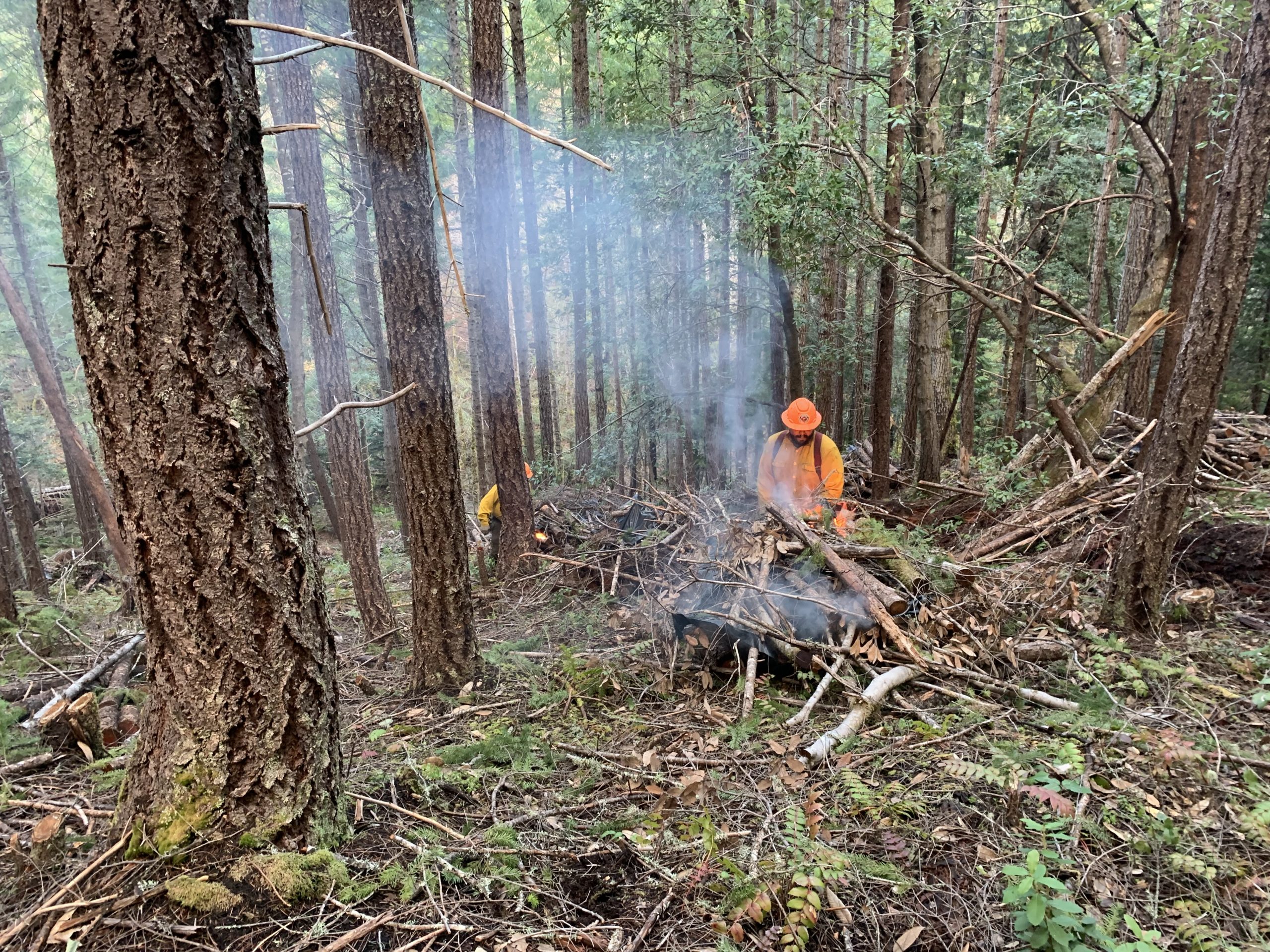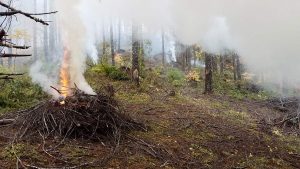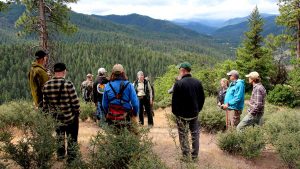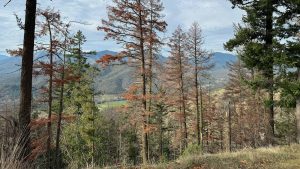Williams Project Area
Under the guidance of the Rogue Forest Partners and the Lomakatsi Restoration Project, the Bureau of Land Management (BLM) and several private landowners in the Williams community have come together to actively manage their land, reduce the risk of fire, and enhance ecological conditions as a cross-boundary, all-lands project.
Where:
Josephine County, adjacent to Williams, OR
When:
Why:
Scope:
The restoration work planned addresses greatly needed thinning and fuels reduction, located in ecologically strategic and tactically important landscape settings.
The project’s desired outcomes are increased open forest and strategic fuels reduction to promote the beneficial use of fire, both prescribed burning, and potentially managed natural ignitions for resource benefit. Selective thinning relieves legacy trees, primarily hardwoods, of excess competition from dense smaller ingrowth, returning tree vigor, resistance to insects, and disease. Most importantly, these treatments reduce the risk of canopy fire which could degrade complex forest habitat, soil conditions, and aquatic habitat and endanger the community.
Healthier forests, healthier habitat
Critical wildlife habitat for the northern spotted owl can be found in the forests surrounding Williams, OR. Past logging removed many of the large conifers allowing small trees to fill in. Large hardwoods are still present and will be protected and given space to grow. One important goal of selective thinning is to accelerate the growth of fire-resistant conifers such as Douglas-fir, Ponderosa pine, and Port-Orford cedar.
By addressing forest resilience, fuels accumulation, and severe fire, aquatic habitat for native fish species is improved by reducing the likelihood of high severity fire impacts.
RFP has identified six projects across the Rogue Basin. These high-priority areas, spanning public land and private tracts, are critically important for reducing the risks of extreme wildfires, promoting forest health, and restoring resilience to our landscape. The work began in the Applegate and Illinois Valleys in 2020 and continues into 2025.
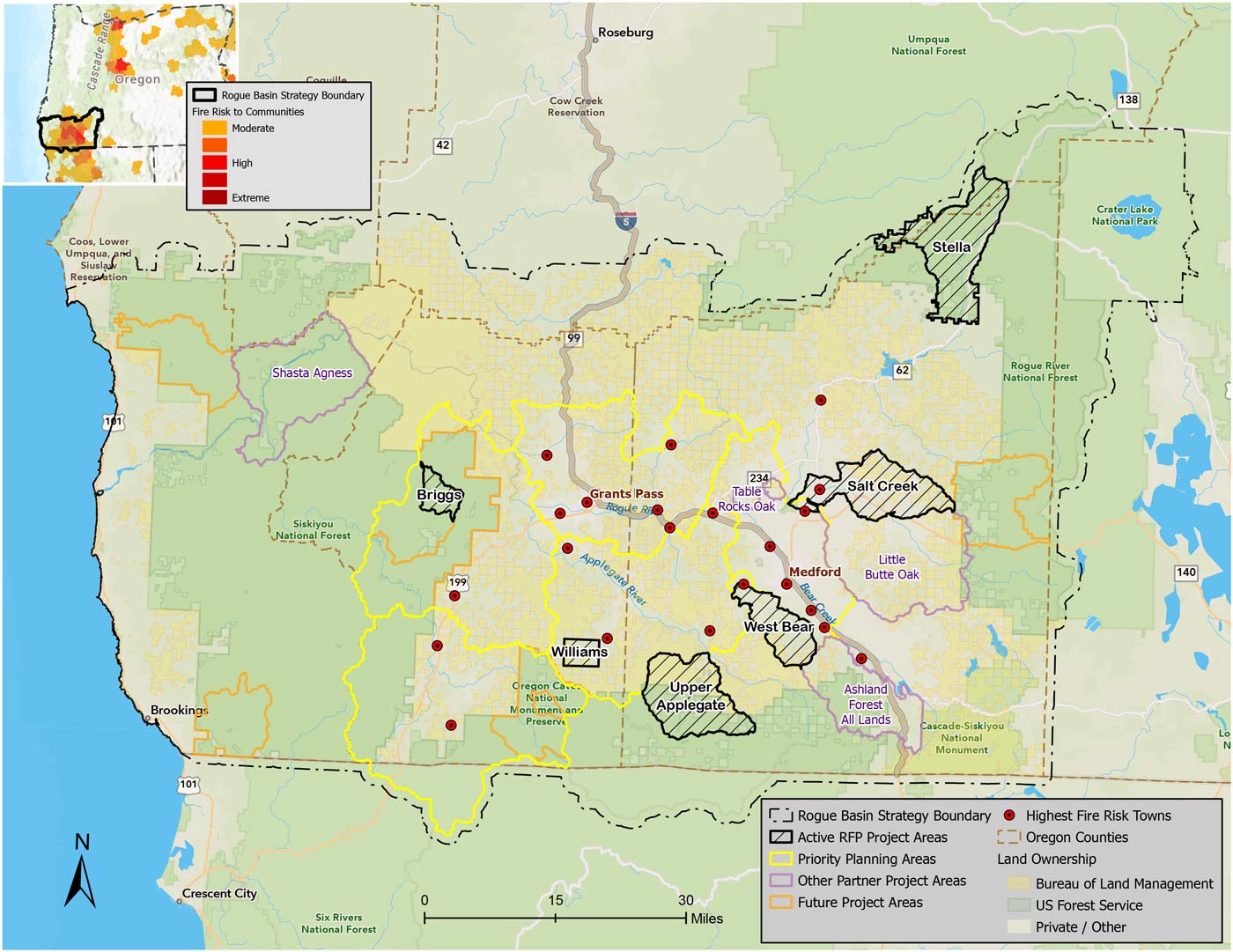
The Upper Briggs Restoration Project on the Wild Rivers District in the Illinois Valley supports diverse habitats and forest conditions. This ridge burned in the Klondike/Taylor fire, but from ridge to stream, one encounters legacy trees to protect, dense understories to be thinned and chaparral patches intermixed. The ridgeline is important for managing fires moving from wildlands toward Illinois Valley communities.
The Williams Project near the community of Williams in Josephine County is focused on reducing fuels and improving forest habitat through restoration treatments on federal and private lands in an all-lands effort bringing together the BLM and NRCS with the RFP to demonstrate restorative wildfire risk reduction. Together, we are working toward the landscape-vision of the RBS.
The West Bear Project addresses the need for wildfire fuels reduction immediately adjacent to the cities of Jacksonville, Phoenix, Talent, and Medford. The 27,000-acre project area within the wildland urban interface west of Bear Creek and the I-5 corridor is one of the most at-risk locations for wildfire in Oregon.
The 50,000-acre USFS and BLM Upper Applegate Watershed Project (UAW) is located in the Applegate Valley with over 18,000 acres of planned restoration treatments designed during a three-year community planning process convened by the Siskiyou Mountains Ranger District of the RRSNF. Some 3500 acres are scheduled by RFP to be completed by 2025. The UAW is one of the highest priority areas for restoration under the RBS.
The Stella Landscape Restoration Project project occurs in the most productive corner of the Rogue Basin, where the lack of low-intensity fire and past management has resulted in high-density stands and declining forest health. To improve wildlife habitat and forest health and build ecosystem resilience to wildfire, the Stella Project will strategically apply ecological thinning (both non-commercial and commercial) and prescribed fire to achieve restoration goals across a 43,955-acre footprint.
The Salt Creek Project planning area is large but RFP work with the BLM starts with a small footprint of fuels treatments in oak woodlands. The treatments will demonstrate ecological restoration under the RBS in these dry but diverse oak habitats and help reduce wildfire risks near the communities of Eagle Point.
The Rogue Basin communities, woodlands, and forests are at risk of uncharacteristic fire and no one organization can manage this risk. The Rogue Forest Partners share a common vision, seeking to restore forests and reduce risk by applying ecological restoration and bringing fire back as a tool.
Terry Fairbanks, Southern Oregon Forest Restoration Collaborative
News

